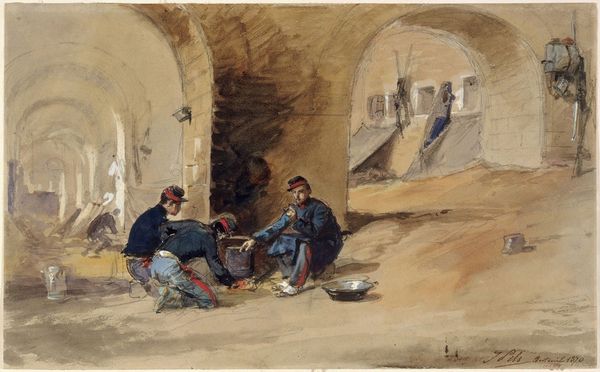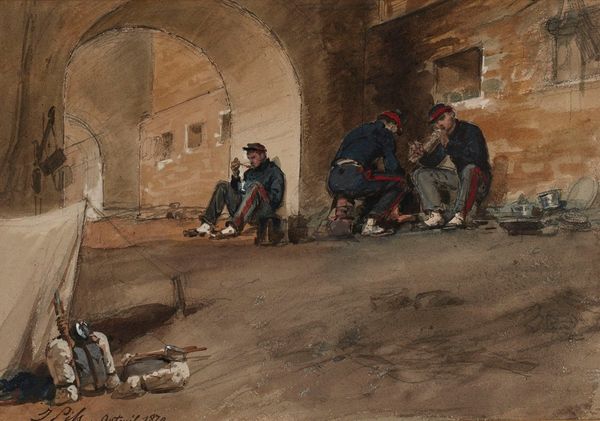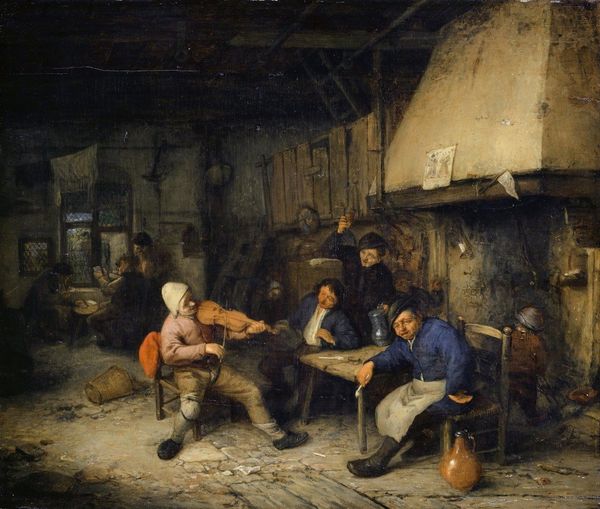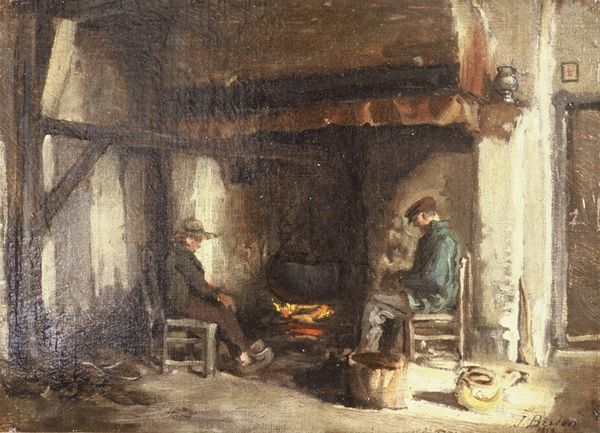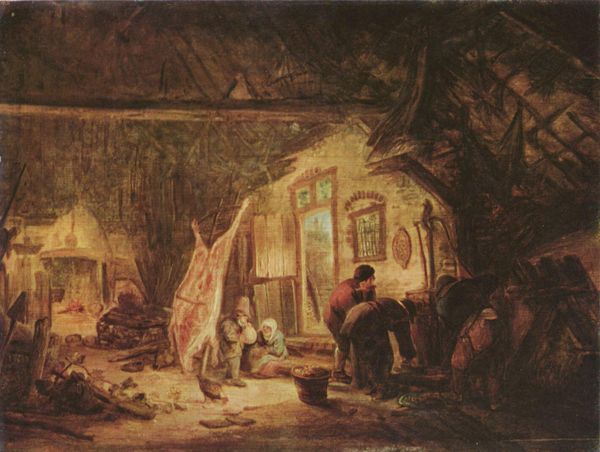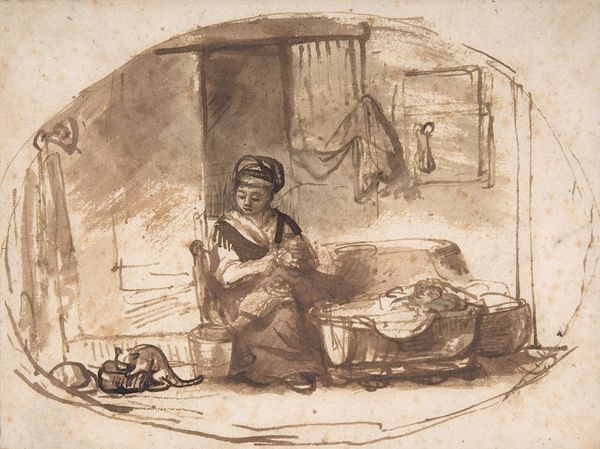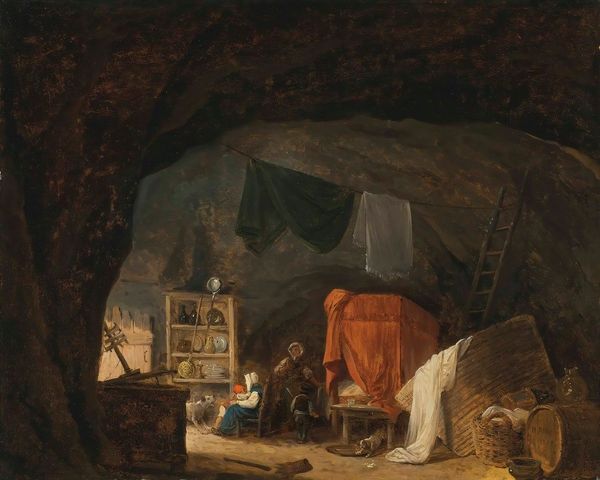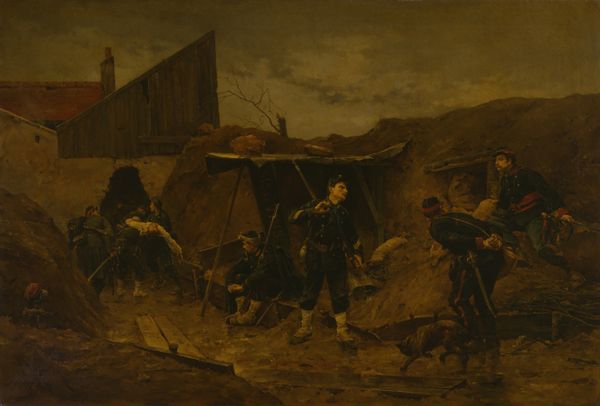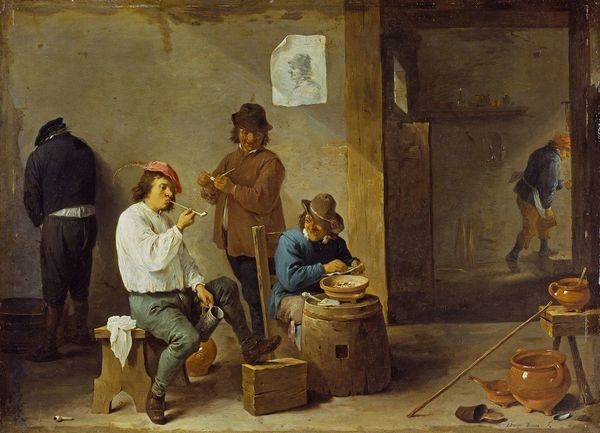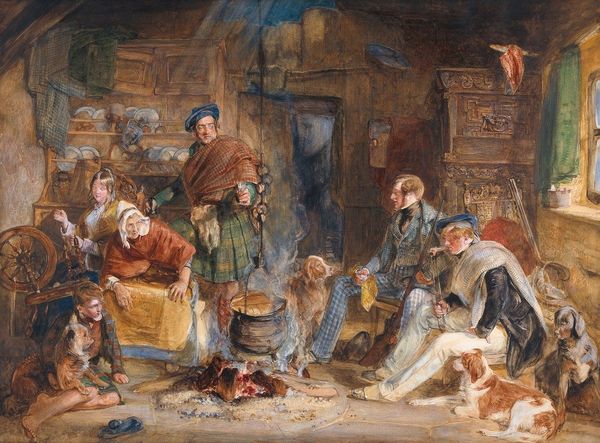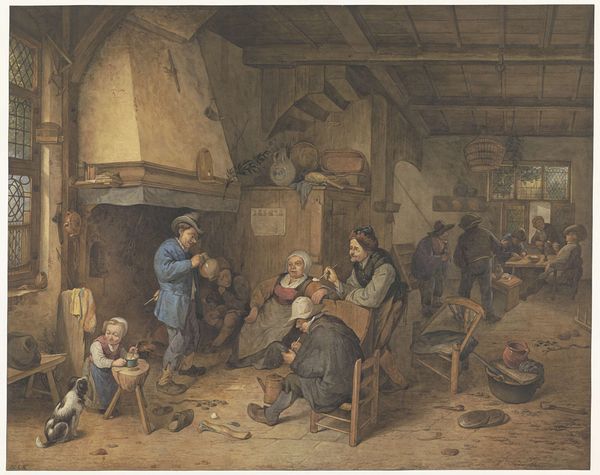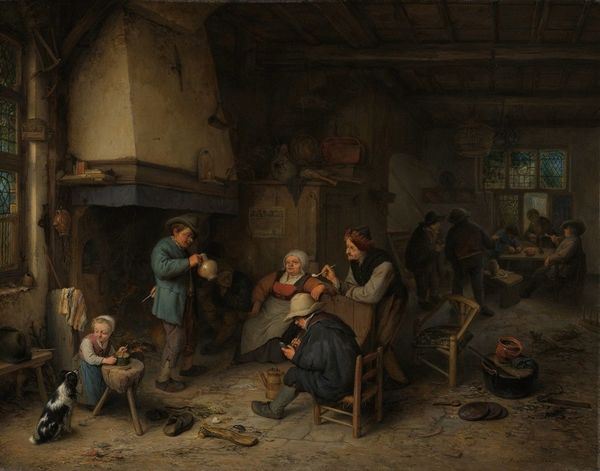
watercolor
#
impressionism
#
landscape
#
watercolor
#
genre-painting
#
history-painting
#
watercolor
Copyright: Public Domain: Artvee
Editor: So, this watercolor is titled "Campement de mobiles bretons sous le viaduc d’Auteuil en 1870," by Isidore Pils, from 1870. It strikes me as a pretty intimate depiction of soldiers amidst what looks like makeshift living conditions. What stands out to you when you look at it? Curator: Immediately, I think about the historical context. 1870 places this work squarely within the Franco-Prussian War. It depicts, as the title suggests, Breton soldiers – “mobiles,” meaning they were part of the National Guard mobilized during the conflict. Knowing that, the apparent squalor becomes a potent statement. Notice how Pils chooses to show them not in heroic battle, but rather in the mundane reality of waiting. How does that challenge the typical war painting? Editor: I see what you mean. The muted palette reinforces that feeling, and it’s very different from those grand, propagandistic paintings. So, it’s like Pils is subtly subverting the typical war narrative? Curator: Precisely! Consider the Auteuil viaduct itself. Viaducts were symbols of modernity and progress. But here, it provides shelter not for bustling Parisians but for displaced soldiers. Pils is using the viaduct to comment on the disruptive impact of the war on French society and question the supposed progress. It makes me wonder, where would this have been displayed, and for what audience? Editor: That's interesting. I hadn't considered the viaduct as a symbol in itself. The figures almost blend into their surroundings. Would it be fair to read this as a critique of the war effort or, at least, the glorification of it? Curator: Absolutely. It’s less a celebration of martial glory and more a quiet acknowledgement of the human cost and societal disruption. The rapid brushwork of watercolor also mirrors the disruption of war; that adds another layer to its political charge. Pils has captured more than just an image; he's documented a moment of national crisis. Editor: I never would have considered the artist's intention with war depictions. Looking at this through that historical and social lens adds so much depth! Curator: Exactly, it shows the vital role art plays in societal discourse.
Comments
No comments
Be the first to comment and join the conversation on the ultimate creative platform.
